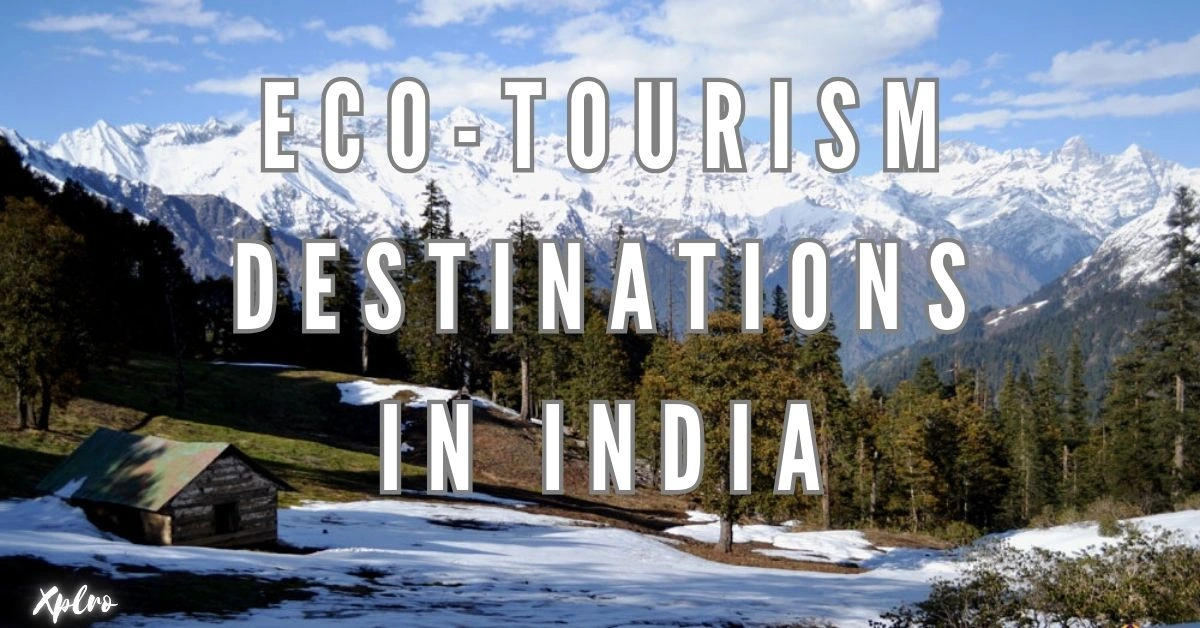Eco-Tourism Destinations in India; has gained popularity as travelers seek to explore the world while minimizing their environmental impact. India, with its diverse landscapes and rich biodiversity, is a prime destination for eco-tourism. From the lush Western Ghats to the majestic Himalayas, India offers countless opportunities to immerse yourself in nature while promoting conservation and supporting local communities.
- 1. Kaziranga National Park, Assam – Home to the Majestic One-Horned Rhino
- 2. Sundarbans National Park, West Bengal – The Largest Mangrove Forest in the World
- 3. Periyar Wildlife Sanctuary, Kerala – A Paradise for Nature Lovers
- 4. Valley of Flowers National Park, Uttarakhand – A Floral Wonderland
- 5. Ladakh, Jammu & Kashmir – The Cold Desert of India
- 6. Silent Valley National Park, Kerala – A Pristine Rainforest
- 7. Great Himalayan National Park, Himachal Pradesh – A Trekker’s Paradise
- 8. Chilika Lake, Odisha – Asia’s Largest Brackish Water Lagoon
- 9. Namdapha National Park, Arunachal Pradesh – The Eastern Frontier’s Hidden Gem
- 10. Mawlynnong, Meghalaya – Asia’s Cleanest Village
- FAQs
1. Kaziranga National Park, Assam – Home to the Majestic One-Horned Rhino
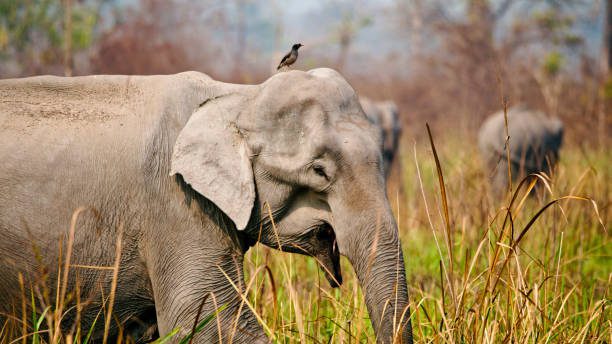
Kaziranga National Park, located in the northeastern state of Assam, is a UNESCO World Heritage Site known for its incredible biodiversity. It’s a popular spot for eco-tourism and is particularly famous for being home to the endangered one-horned rhinoceros. In fact, more than two-thirds of the world’s one-horned rhinos live here!
The park is spread across the floodplains of the Brahmaputra River and is teeming with wildlife. You might see tigers, elephants, wild water buffalo, and swamp deer roaming freely.
What to Do:
- Jeep Safaris: Explore the park on a jeep safari to spot rhinos, tigers, and a variety of birds.
- Elephant Rides: Get a unique view of the park’s grasslands by taking an elephant ride.
- Birdwatching: Kaziranga is a birdwatcher’s paradise with over 450 species. Bring your binoculars and spot some rare birds.
When to Go:
The best time to visit Kaziranga is from November to April. The weather is pleasant during these months, and you’re more likely to see wildlife.
2. Sundarbans National Park, West Bengal – The Largest Mangrove Forest in the World
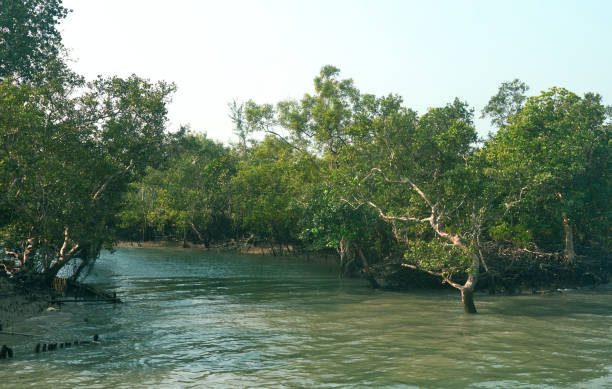
The Sundarbans, a UNESCO World Heritage Site, is the largest mangrove forest in the world. This unique ecosystem spans across India and Bangladesh, offering a thrilling eco-tourism experience. The Indian side of the Sundarbans is known for its intricate waterways, perfect for adventurous boat rides.
Wildlife and Adventure:
The Sundarbans is home to the majestic Royal Bengal Tiger, one of the world’s most endangered big cats. You might also encounter saltwater crocodiles, spotted deer, and a wide variety of bird species.
Eco-Tourism Activities:
- Boat Safaris: Explore the mangrove forests on a boat safari. Keep your eyes peeled for tigers, crocodiles, and other fascinating wildlife.
- Village Visits: Learn about the traditional lifestyle of the people who live in harmony with nature in the local villages.
- Birdwatching: The Sundarbans attracts many migratory birds, especially during winter. Bring your binoculars and spot some rare species.
When to Go:
The best time to visit the Sundarbans is from October to March. The weather is cooler during these months, making it ideal for boat safaris and exploring the mangrove forests.
3. Periyar Wildlife Sanctuary, Kerala – A Paradise for Nature Lovers

Nestled in the Western Ghats, the Periyar Wildlife Sanctuary in Kerala is a paradise for nature enthusiasts. This sanctuary, part of the Periyar Tiger Reserve, offers lush greenery, diverse wildlife, and serene landscapes.
Wildlife and Nature:
Periyar is known for its significant population of elephants, tigers, leopards, and various bird and reptile species. The Periyar Lake, surrounded by forested hills, adds to the tranquil ambiance.
Eco-Tourism Activities:
- Boat Cruises: Enjoy a peaceful boat cruise on Periyar Lake. You might spot herds of elephants, sambar deer, and a variety of water birds.
- Trekking and Nature Walks: Explore the dense forests on guided trekking and nature walks. Tribal naturalists will share their knowledge of the local flora and fauna.
- Bamboo Rafting: Experience the serenity of the lake on a bamboo raft. It’s a peaceful and eco-friendly way to enjoy the scenic beauty.
When to Go:
The best time to visit Periyar is from October to March. The weather is cooler during this period, and wildlife activity is higher.
4. Valley of Flowers National Park, Uttarakhand – A Floral Wonderland
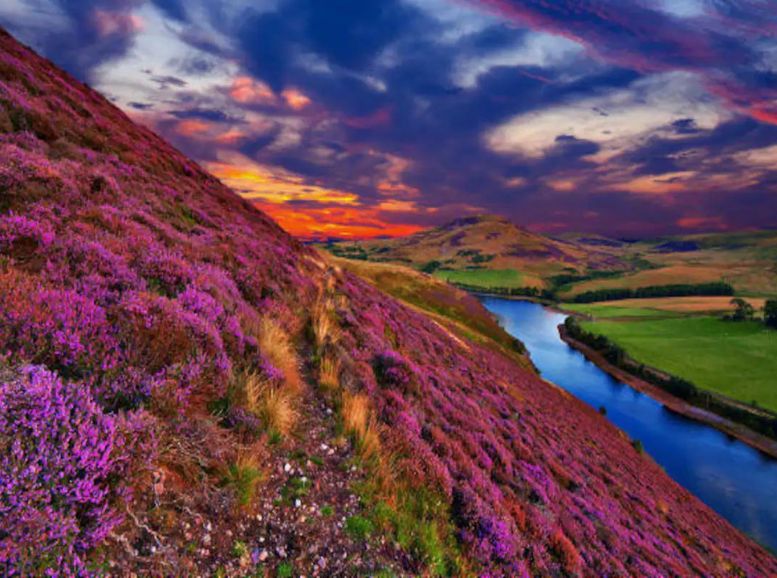
The Valley of Flowers National Park, nestled in the Garhwal Himalayas, is a UNESCO World Heritage Site renowned for its vibrant meadows of alpine flowers. This high-altitude park is a breathtaking natural beauty, home to over 500 species of flora. It’s also a summer haven for endangered species like the Asiatic black bear and the snow leopard.
Eco-Tourism Activities:
- Trekking: Embark on a trek through the valley to witness the stunning blooms of exotic flowers like blue poppies, daisies, and anemones.
- Hemkund Sahib: Explore the nearby Hemkund Sahib, a sacred Sikh pilgrimage site located at a glacial lake.
- Nature Photography: Capture the stunning landscapes and rich biodiversity of the valley through nature photography.
When to Go:
The best time to visit the Valley of Flowers is from July to September. This is when the valley is in full bloom, offering a mesmerizing spectacle of colors.
5. Ladakh, Jammu & Kashmir – The Cold Desert of India

Ladakh, a region in northern India, offers a unique eco-tourism experience. Known for its stark landscapes, high-altitude desert, and pristine lakes, Ladakh is committed to sustainable tourism and preserving the fragile Himalayan ecology.
Wildlife and Nature:
Ladakh is home to a variety of wildlife, including snow leopards, Tibetan antelopes, yaks, and migratory birds.
Eco-Tourism Activities:
- Trekking: Explore the Hemis National Park, a habitat for the elusive snow leopard.
- Camping: Experience the beauty of Pangong Lake by camping under its clear skies for an unforgettable stargazing experience.
- Village Exploration: Learn about Ladakhi culture and eco-friendly practices like traditional agriculture and solar energy.
When to Go:
The best time to visit Ladakh is from May to September. The weather is mild during these months, making it ideal for trekking and outdoor activities.
6. Silent Valley National Park, Kerala – A Pristine Rainforest
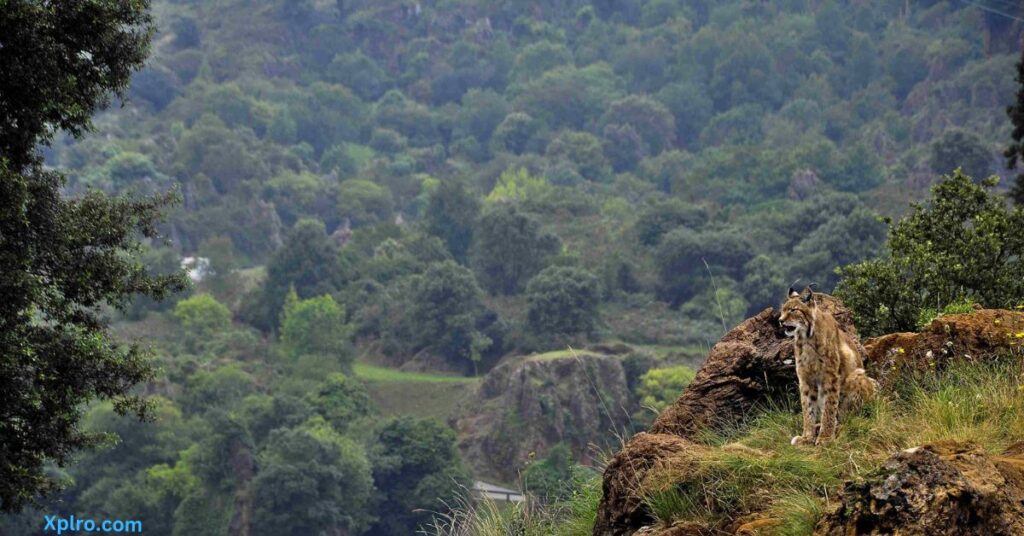
Silent Valley National Park, nestled in the Western Ghats, is one of India’s last remaining undisturbed tropical rainforests. This pristine environment is a haven for rich biodiversity, including the endangered lion-tailed macaque, tigers, elephants, and various amphibians and birds.
Eco-Tourism Activities:
- Guided Nature Walks: Explore the park’s diverse flora and fauna on guided nature walks.
- Trekking: Trek to the Kunthi River, which flows through the park’s dense forests.
- Birdwatching: Spot a variety of endemic and migratory bird species in the park.
Best Time to Visit:
The best time to visit Silent Valley is from December to April. The weather is clear during these months, ideal for nature walks and wildlife spotting.
7. Great Himalayan National Park, Himachal Pradesh – A Trekker’s Paradise
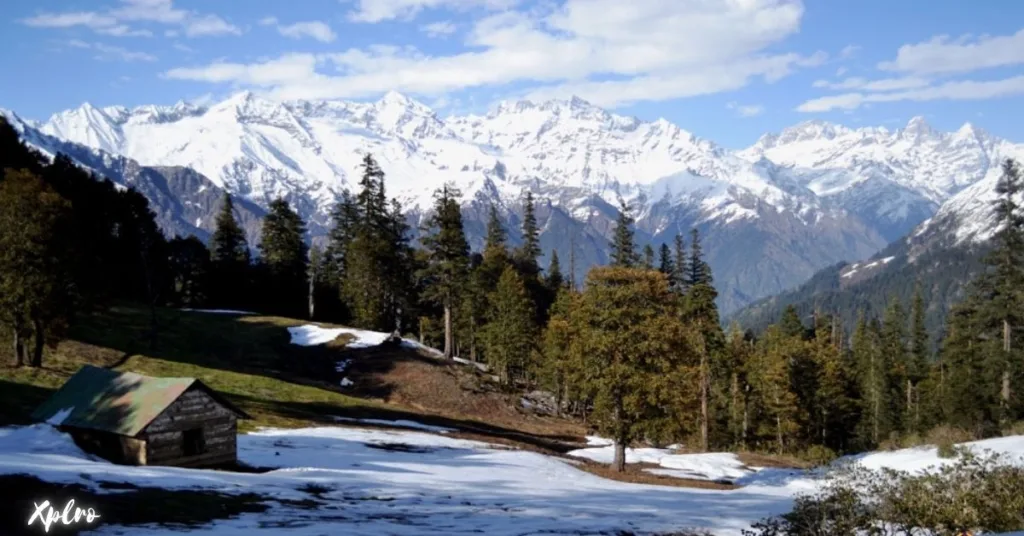
The Great Himalayan National Park in Himachal Pradesh, a UNESCO World Heritage Site, is an untouched wilderness offering a unique eco-tourism experience. Nestled in the Kullu region, the park boasts a diverse range of flora and fauna, including the endangered snow leopard, Himalayan brown bear, and over 375 species of birds.
Natural Beauty:
The park is renowned for its breathtaking landscapes, including alpine meadows, dense forests, and pristine rivers.
Eco-Tourism Activities:
- Trekking: Explore the park’s various trails, such as the Sainj Valley and Tirthan Valley, offering stunning Himalayan views.
- Camping: Immerse yourself in nature by camping in the high-altitude meadows.
- Birdwatching: Spot a variety of pheasants, parakeets, and vultures in the park.
Best Time to Visit:
The best time to visit the Great Himalayan National Park is from April to June and September to November. The weather during these periods is ideal for trekking and outdoor activities.
8. Chilika Lake, Odisha – Asia’s Largest Brackish Water Lagoon
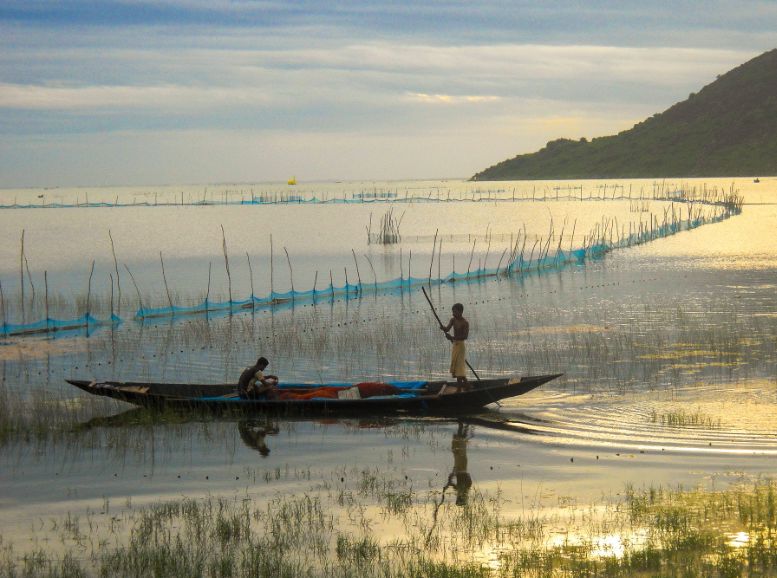
Chilika Lake, located in Odisha, is India’s largest coastal lagoon and a globally important wetland. This biodiversity hotspot is home to over 160 species of birds, including migratory species like flamingos and pelicans. The lake’s ecosystem supports a variety of marine life, including the endangered Irrawaddy dolphin, making it a popular destination for eco-tourism.
Eco-Tourism Activities:
- Boat Safaris: Explore the lake on a boat safari to spot Irrawaddy dolphins and various bird species.
- Nalabana Bird Sanctuary: Visit the Nalabana Bird Sanctuary, a vital refuge for thousands of migratory birds.
- Nature Walks: Enjoy nature walks along the lakeshore to experience the beauty of the lagoon’s ecosystem.
Best Time to Visit:
The best time to visit Chilika Lake is from November to February. This is when migratory birds arrive, and the weather is cooler.
9. Namdapha National Park, Arunachal Pradesh – The Eastern Frontier’s Hidden Gem
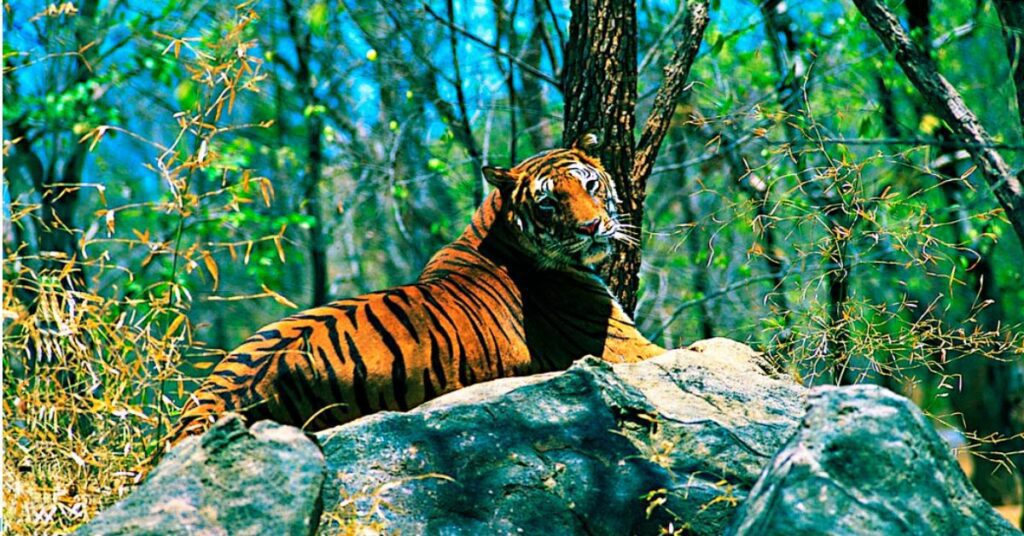
Namdapha National Park, located in Arunachal Pradesh, is a biodiverse hotspot and one of India’s largest protected areas. Its remote location in the Eastern Himalayas makes it an offbeat destination for eco-tourism. Namdapha is known for its unique flora and fauna, including the clouded leopard, red panda, and a wide range of bird species.
Eco-Tourism Activities:
- Trekking: Explore the park’s diverse ecosystems, from tropical to alpine zones, on guided treks.
- Wildlife Safaris: Spot rare and endangered species like the Hoolock gibbon and the Assamese macaque on wildlife safaris.
- Cultural Tours: Learn about the indigenous communities living in harmony with nature by visiting local tribal villages.
Best Time to Visit:
The best time to visit Namdapha National Park is from October to April. The weather is favorable for trekking and wildlife viewing during these months.
10. Mawlynnong, Meghalaya – Asia’s Cleanest Village
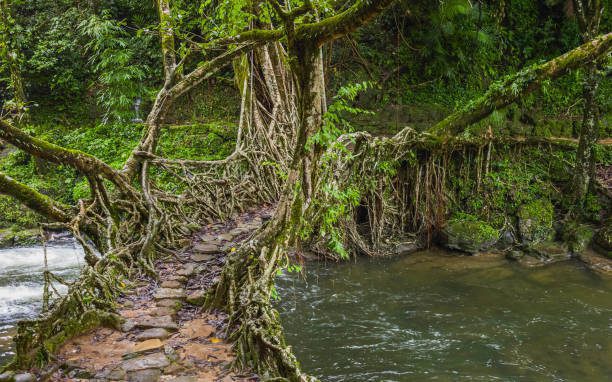
Mawlynnong, located in Meghalaya, is renowned as “Asia’s Cleanest Village” due to its commitment to eco-friendly practices and community-driven sustainability. This village is a natural beauty, with lush greenery, crystal-clear streams, and unique living root bridges.
Eco-Tourism Activities:
- Living Root Bridges: Explore the fascinating living root bridges, a testament to the harmony between humans and nature.
- Village Walks: Learn about the community’s sustainable lifestyle and waste management practices through village walks.
- Trekking: Trek to nearby viewpoints like Sky View Point for panoramic views of the Bangladeshi plains.
Best Time to Visit:
The best time to visit Mawlynnong is from September to May. The weather is pleasant during these months, ideal for exploring the village and its surroundings.
Conclusion — Eco-Tourism Destinations in India
From trekking the majestic Himalayas to exploring vibrant coral reefs and lush rainforests, India’s eco-tourism destinations offer a kaleidoscope of experiences for nature enthusiasts. Explore the website Xplro.com to discover hidden gems like Kaziranga National Park, a haven for one-horned rhinos, or unwind in the serene beauty of Periyar Wildlife Sanctuary, where boat cruises offer glimpses of elephants and sambar deer. Witness the vibrant tapestry of wildflowers in Valley of Flowers National Park, or embark on an adventure in Ladakh, a region committed to sustainable tourism and preserving the fragile Himalayan ecology. Explore the crystal-clear streams and unique living root bridges of Mawlynnong, Asia’s Cleanest Village, or lose yourself in the captivating beauty of Chilika Lake, a haven for migratory birds and the endangered Irrawaddy dolphin. These destinations not only showcase India’s incredible biodiversity but also promote responsible travel practices that benefit local communities and conservation efforts. So, choose eco-tourism with Xplro.com and embark on a journey that enriches your soul while preserving India’s natural wonders for generations to come.
FAQs
1. What is eco-tourism, and why is it important?
- Eco-tourism is a form of responsible travel that emphasizes visiting natural areas with a focus on environmental conservation and the well-being of local communities. It’s important because it helps preserve fragile ecosystems, supports sustainable development, and raises awareness about environmental and cultural issues. By participating in eco-tourism, travelers contribute to the protection of biodiversity while experiencing the beauty of nature in a responsible way.
2. Which are the best eco-tourism destinations in India?
- India is home to several renowned eco-tourism destinations. Some top choices include Kaziranga National Park in Assam, famous for its one-horned rhinoceros; Sundarbans National Park in West Bengal, which protects the Bengal tiger and mangrove forests; Periyar Wildlife Sanctuary in Kerala, known for its rich biodiversity and scenic boat rides; and Valley of Flowers in Uttarakhand, a UNESCO World Heritage Site known for its seasonal floral blooms and alpine beauty.
3. How does eco-tourism benefit local communities in India?
- Eco-tourism directly benefits local communities by creating jobs in hospitality, guiding, and eco-friendly businesses. It encourages locals to engage in sustainable practices and helps preserve traditional cultures. Many eco-tourism projects also involve local people in conservation activities, providing them with economic benefits while fostering a deeper connection to their natural environment.
4. What are the key principles of eco-tourism?
- Eco-tourism is built on principles such as minimizing environmental impact, conserving biodiversity, and offering economic benefits to local populations. It emphasizes responsible travel that educates both tourists and local communities about environmental issues. The goal is to ensure that natural areas are preserved while allowing people to appreciate and experience them in a sustainable manner.
5. Is eco-tourism suitable for families with children?
- Eco-tourism is an excellent choice for families with children, as it provides educational and enjoyable activities in nature. Families can participate in wildlife safaris, nature walks, and cultural exchanges, which offer learning experiences for children. Places like Periyar Wildlife Sanctuary and Chilika Lake are family-friendly destinations where everyone can explore nature and engage in eco-conscious activities together.
6. What should I pack for an eco-tourism trip in India?
- Packing for an eco-tourism trip should be thoughtful and eco-friendly. Travelers should bring reusable water bottles, biodegradable toiletries, and reusable bags to reduce plastic waste. Comfortable clothing, trekking shoes, insect repellent, and sunscreen are essential for most eco-destinations. In areas like Ladakh or the Himalayas, it’s also important to bring warm layers and gear suitable for cold or high-altitude conditions.
7. What is the best time to visit eco-tourism destinations in India?
- The best time to visit eco-tourism spots depends on the region. For wildlife parks like Kaziranga and Periyar, the ideal time is November to April when the weather is cooler and animals are more easily spotted. If you’re visiting places like the Valley of Flowers, the best time is July to September when the flowers are in bloom. For coastal areas such as Chilika Lake, the winter months from November to February are ideal for birdwatching.
8. What are some eco-friendly accommodations available in India?
- Many eco-tourism destinations in India offer eco-friendly accommodations, including lodges, camps, and homestays that adhere to sustainable practices. Some examples include Spice Village in Kerala and Evolve Back in Coorg, both of which are committed to reducing their environmental footprint by using renewable energy, conserving water, and promoting local culture. Dune Eco Village in Tamil Nadu is another great option, focusing on sustainability and eco-conscious living.
9. Are permits required to visit eco-tourism destinations in India?
- In some eco-tourism areas, particularly national parks and protected regions, permits are required for entry. For instance, visitors to Kaziranga National Park or Namdapha National Park in Arunachal Pradesh must obtain entry permits. Additionally, in border regions like Ladakh, Inner Line Permits (ILPs) are necessary for certain restricted areas. It’s advisable to check the permit requirements for your chosen destination in advance.
10. What activities can be done at eco-tourism destinations in India?
- Eco-tourism in India offers a wide variety of activities, including wildlife safaris, birdwatching, trekking, camping, and boat rides. At Kaziranga, you can go on jeep safaris to see wildlife; at Periyar, there are boat tours to observe animals around the lake. In Ladakh, you can experience high-altitude treks and cultural village tours. Many eco-tourism spots also offer opportunities to learn about local traditions and sustainability practices from the communities themselves.
11. How can I contribute to eco-tourism as a responsible traveler?
- As a responsible traveler, you can contribute to eco-tourism by following eco-friendly practices. Use reusable water bottles and bags, avoid plastic waste, and respect wildlife by maintaining a safe distance and following the rules of nature reserves. Support local communities by choosing eco-conscious accommodations, buying local crafts, and engaging with community-led tours. Responsible travel also means leaving no trace—taking only memories and leaving nature as you found it.
12. Is eco-tourism safe in India?
- Eco-tourism in India is generally safe, especially when travelers adhere to guidelines provided by local authorities and tour operators. Most eco-tourism destinations are well-regulated, with trained guides and well-maintained infrastructure. However, it’s essential to follow safety protocols, especially during activities like trekking or wildlife safaris, and stay informed about health precautions, local weather conditions, and regional guidelines for protected areas.




